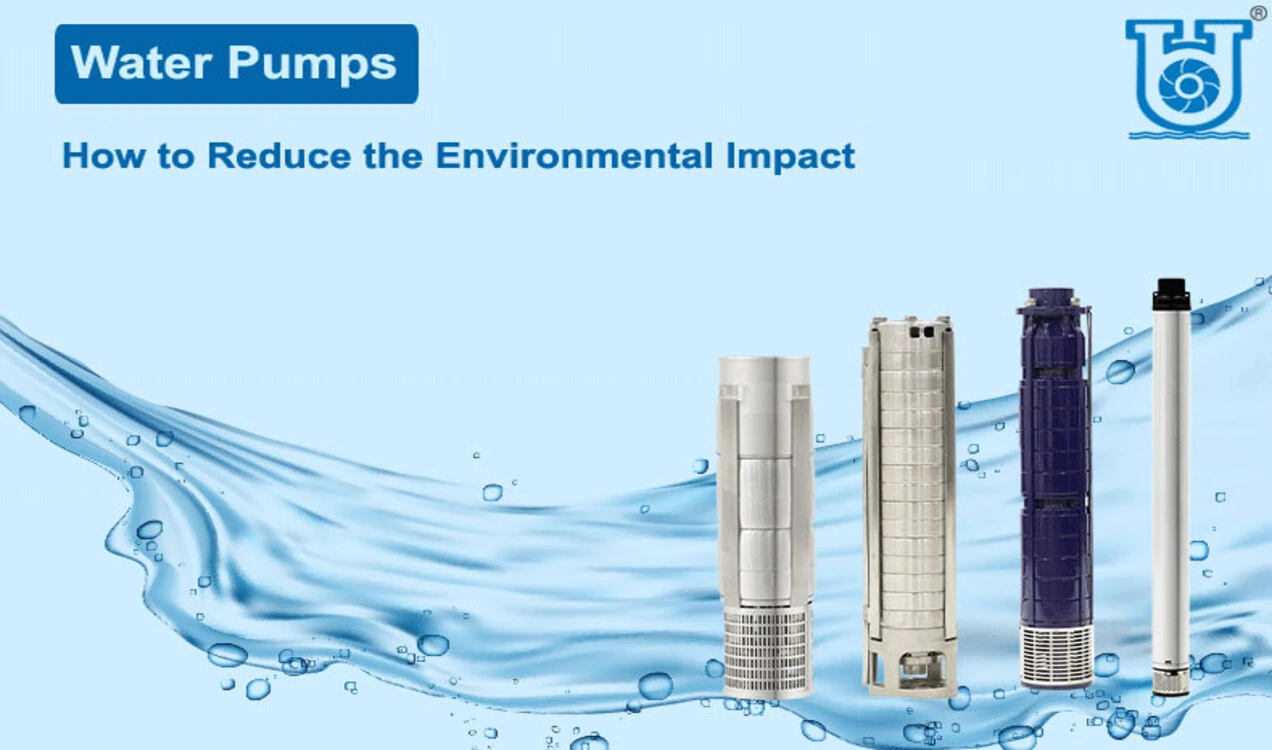Water pumps are essential for supplying everyone with hygienic drinking water as the global population continues to rise. If not correctly controlled, these pumps can also have a considerable negative influence on the environment. The influence of water pumps on the environment will be discussed in this article, along with methods that may be made to lessen it.
Types of Water Pumps and Their Efficiency:
1. Centrifugal Pumps:
The most prevalent kind of water pump is a centrifugal pump, and these pumps are frequently utilised in industrial, commercial, and residential settings. They are efficient for pumping large volumes of water at low pressure. The efficiency ranges from 50% to 85%.
2. Mini Monoblock Pump:
A mini Monoblock pump is a compact and portable water pump that is designed for small-scale applications such as domestic use, gardening, and small-scale irrigation. The efficiency range from 50% to 70%.
3. Submersible Pumps:
Submersible pumps are designed to be immersed in water and are commonly used in well and borehole applications. Efficiency up to 85%.
4. Diaphragm Pumps:
Diaphragm pumps are positive displacement pumps that use a flexible diaphragm to move fluid. Efficiency up to 95%.
5. Open well Monoblock Pumps:
Open well Monoblock pumps are designed to be highly efficient in terms of energy consumption and water output. They typically have a motor capacity and impeller design optimized for maximum efficiency, resulting in energy savings and cost-effective water pumping. The efficiency is 70-75%.
Environmental Impact of Water Pumps:
Energy Consumption:
Operating water pumps requires a substantial amount of energy. Most water pumps use electricity or fossil fuels to power their engines, and this energy consumption contributes to the emission of greenhouse gases.
Noise Pollution:
Water pumps tend to be rather noisy, especially when they’re working quickly. This noise pollution can disturb the surrounding wildlife and lead to long-term hearing problems for humans who live close to the pumps.
Water Pollution:
Water pumps can also contribute to water pollution, particularly if they are used for irrigation or drainage. When water pumps are used for drainage, they can carry pollutants such as oil and chemicals into water bodies, which can have adverse effects on aquatic life.
Habitat Destruction:
Water pumps can destroy habitats, especially if they are employed in extensive irrigation projects. The building of dams and canals needed for irrigation has the potential to seriously harm ecosystems and impede the free flow of rivers and streams.
How to Reduce the Environmental Impact of Water Pumps:
Choose Energy-Efficient Water Pumps:
One of the best methods to lessen the environmental impact of water pumps is to choose energy-efficient water pumps. Energy-efficient water pumps require less energy, which results in less greenhouse gas emissions. Because of their excellent operational efficiency, they use less energy to pump the same volume of water as conventional pumps. When choosing a water pump, it is essential to look for the energy star label, which indicates that the pump meets specific energy-efficiency standards.
Use Renewable Energy Sources:
Using renewable energy sources to power the pumps as it helps to lower greenhouse gas emissions and reduces the need for fossil fuels.
Use Efficient Irrigation Practices:
Efficient irrigation practices can also reduce the environmental impact of water pumps. Over-watering can lead to waterlogging and soil erosion, which can have adverse effects on the environment. Using rainwater harvesting systems can reduce dependence on water pumps for irrigation and reduce the environmental impact of pumping water from rivers and other water bodies.
Benefits of Using High-Efficiency Water Pumps:
Reduced carbon footprint:
High-efficiency water pumps consume less energy and emit fewer greenhouse gases as a result. You may lessen your carbon footprint and contribute to a cleaner world by utilising these pumps.
Longer lifespan:
High-efficiency water pumps are built to last longer than standard pumps.
Quieter operation:
High-efficiency water pumps are typically quieter than standard pumps, which can be beneficial in residential areas or other settings where noise pollution is a concern.
Conclusion: Practical Tips on How to Minimize Your Environmental Footprint with Your Water Pump
Water pumps play an essential role in many industries and applications, from providing clean water to irrigation and agriculture. However, water pumps can also harm the ecosystem. Here are some helpful hints for reducing your water pump’s environmental impact:
- Maintain your water pump regularly: Regular maintenance can help ensure that your pump is running at peak efficiency. This can include checking and cleaning the pump’s filters, lubricating moving parts, and monitoring for leaks or other issues.
- Use your pump only when necessary: Try to limit the use of your water pump to only when it’s necessary.
- Reduce water usage: By reducing your overall water usage, you can minimize the amount of water that your pump needs to move. This can include measures such as fixing leaks, using low-flow showerheads and faucets and using water-efficient appliances.
Ultimately, you may lessen your environmental impact and encourage a more sustainable future by selecting a high-efficiency water pump, caring for it appropriately, and using less water.


